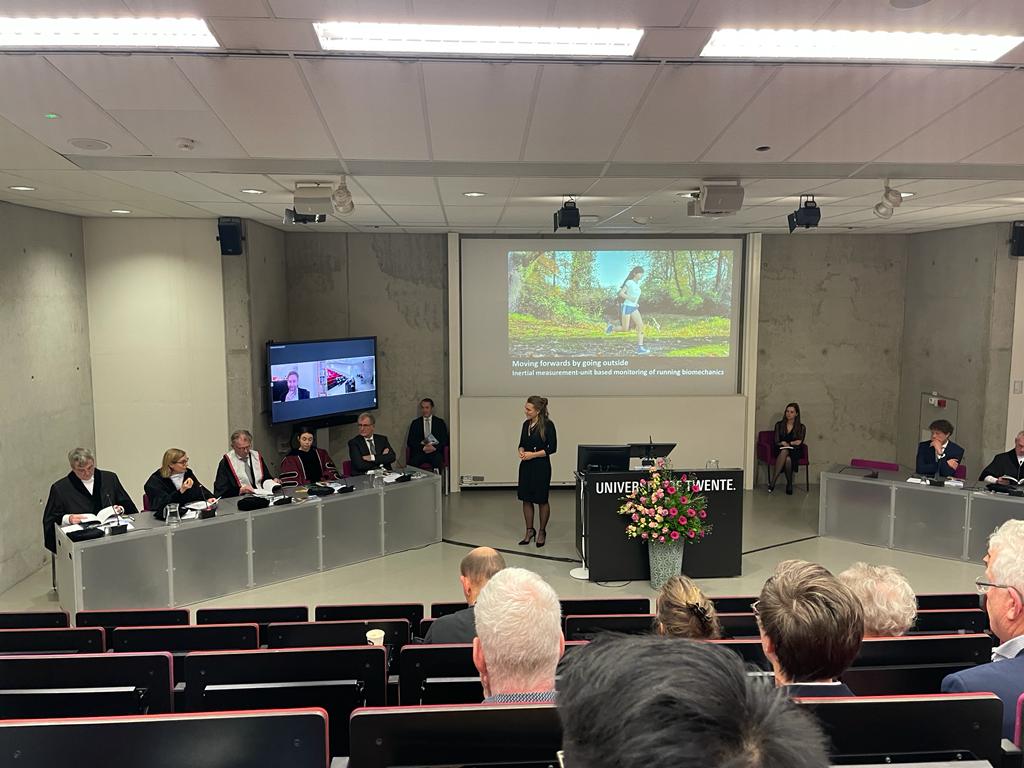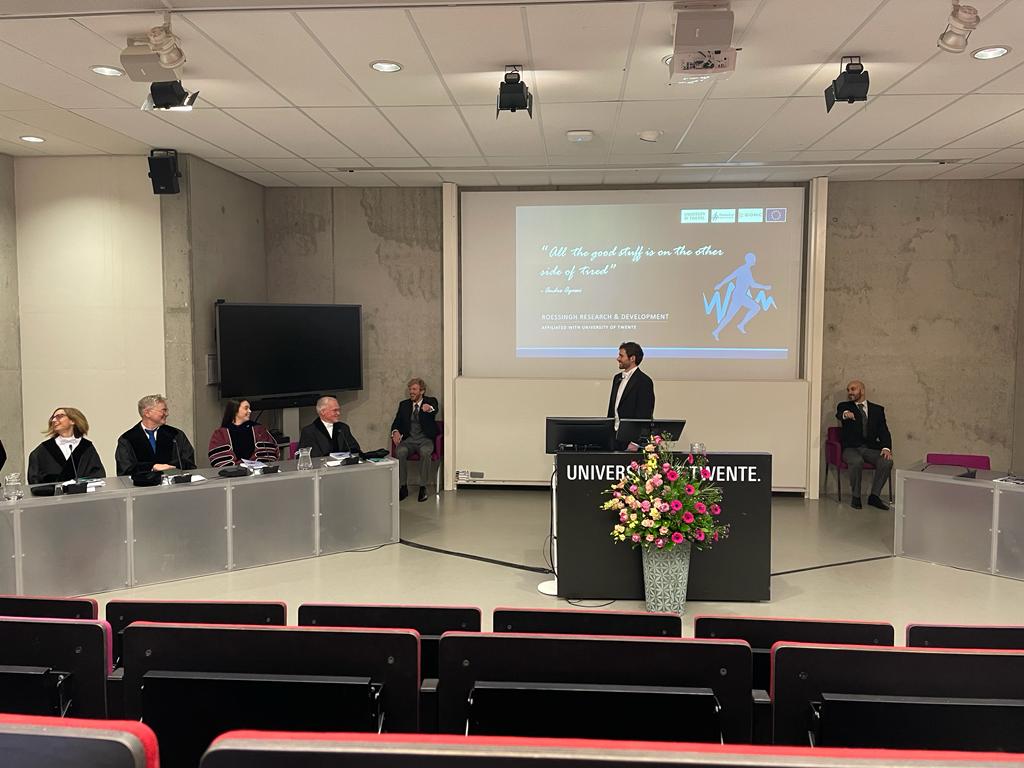Written by: Marian Hurmuz
In the first week of February, two former RRD colleagues defended their PhD thesis! Their focus was on the running population. Marit Zandbergen defended her PhD thesis “Moving forwards by going outside: Inertial measurement unit-based monitoring of running biomechanics”. While running is a popular sport and has many health benefits, there is also a high risk of developing running-related injuries. Running biomechanics could be of help to monitor the risk of injury. However, it is unclear which biomechanics need to be taken into account. Marit worked on this topic during her PhD by aiming to increase our understanding of running biomechanics as measured in- and outside the laboratory and to explore the challenges regarding wearable motion analysis during running in a sport-specific setting. On Thursday, the 2nd of February, 2023, she defended her PhD thesis, which you can find here.
Her thesis covers the following topics:
- Investigating the effects of running-induced fatigue on running kinematics.
- Measuring running gait (i.e. running speed, stride frequency) in a fatiguing outdoor run.
- Assessing the strength of the relationship between peak tibial acceleration and maximal tibial compression force in running.
- Investigating whether the quasi-cyclical nature of running can be used to acquire drift-free 3D orientation of a body segment using a single gyroscope.
- Identifying how the 3D orientation and displacement of a single IMU on the lower leg can be estimated using the quasi-cyclical nature of running.
Marit ends her thesis by recommending others to monitor running biomechanics in a sport-specific setting and to shift their focus from investigating kinematic quantities on a group level to forces underlying them on a subject-specific level. Moving outside by using the methods she proposed in her thesis, is the next step in increasing our understanding of running biomechanics!

On the next day, the 3rd of February, 2023, it was Luca Marotta’s time to defend his PhD thesis “Development of inertial sensor-based methods to assess physical fatigue in running applications”. As already explained, runners have a high injury risk. Monitoring physical fatigue could benefit runners, but quantitative identification of physical fatigue was lacking in literature. So, Luca focused on this by aiming to assess whether physical fatigue can be identified in running using IMUs. During Luca’s defence, one of the committee members even asked the paranymphs to be part of a small experiment. The paranymphs had to keep one arm straight ahead during the defence. This fun experiment showed that people could also get fatigued when they are not moving.
In Luca’s thesis the focus was of course in fatigue while moving, i.e. running. You can find his thesis here , and it includes the following topics:
- Assessing whether biomechanical changes measured with IMUs can help accurately detecting fatigue states in running.
- Identifying whether different triaxial IMUs with different sampling frequencies track similar relative changes in peak accelerations in treadmill running.
- Measuring the extent to which physical fatigue can be identified using IMU data in an outdoor running session and identifying the optimal combination of sensor locations and features.
- Assessing to which extent an algorithm trained on IMU data detecting fatigue can be generalised to different running intensities and scenarios.
Luca concludes his thesis by stating that machine learning models can identify running-induced fatigue with reasonable accuracy regardless of running intensity. Future research should focus on using fatigue information extracted from IMUs as a mean to provide feedback to the runner and ultimately improve training loads and decrease the risk of injuries!
We are very proud of both Marit and Luca for their hard work at RRD the past few years and for successfully defending their PhD theses! We wish them both the best of luck in their future career!
